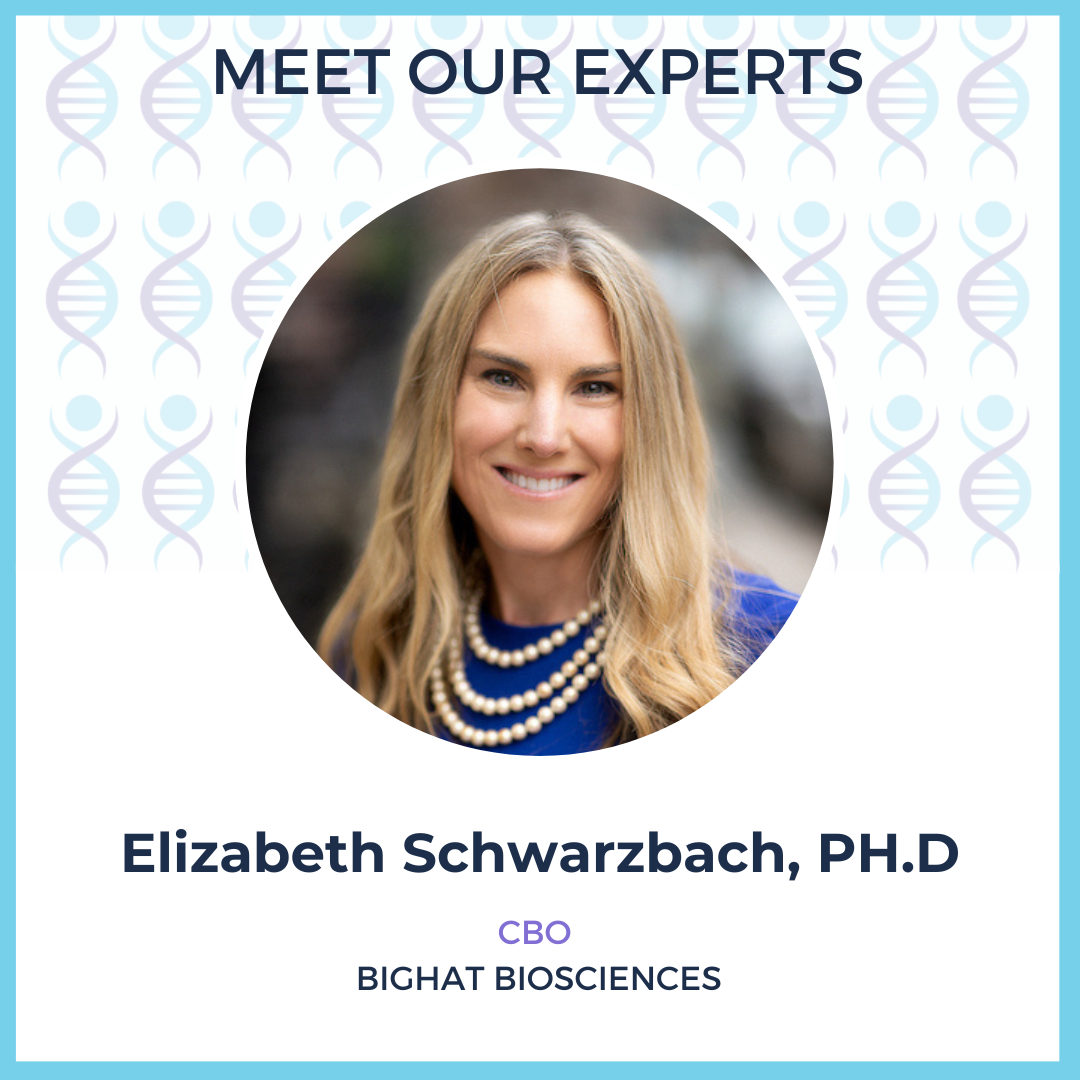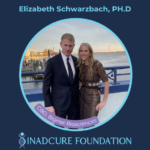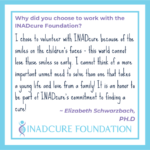
CBO
BigHat Biosciences
LET’S MEET: Dr. Schwarzbach
I have always been a math & science nerd and fell in love with drug discovery when I started as a Biologist at Merck Research Labs in 1999. At that time, I realized I didn’t have a meaningful understanding of the therapeutic programs I was working on. So, I completed my doctorate in neuropharmacology at the University of Pennsylvania School of Medicine.
I loved drug discovery, but I far more enjoyed working with people than lab rats and found that strategy consulting perfectly paired my training, interests, and strengths. After six years of gaining growth, portfolio, and investment strategy experience at L.E.K. Consulting’s Life Sciences practice, I transitioned to the GlaxoSmithKline R&D Strategy team. There, I was extremely fortunate to meet a helpful mentor, Perry Nisen, who brought me to Sanford Burnham Prebys Medical Discovery Institute. Although the nearly perfect weather and even better people made for a wonderful experience, I missed the East Coast.
I moved back to NYC to join Axovant, a company with a late-stage clinical program for Alzheimer’s disease. When that program failed, I was extremely frustrated that decades of time, effort, funding, and patients’ hopes were destroyed by a drug that was effective in mice but didn’t work in humans. The poor translation made me interested in a role at the New York Stem Cell Foundation (NYSCF) Research Institute, given their focus on developing human disease-relevant models for drug discovery and development. At NYSCF, I was fortunate to work with Susan L. Solomon and meet the team and families from INADCure.
In 2020, I became the Chief Business Officer of BigHat Biosciences as I couldn’t pass up an opportunity to join a former LEK employee, Mark DePristo, and be part of a start-up building an integrated machine learning/ wet lab platform for next-generation antibodies. I feel extremely lucky to be part of such an important industry with outstanding people. So, I truly do enjoy spending time with both paid and volunteer drug discovery and development opportunities.
I am extremely fortunate that a drug discovery & development career found me! I have continued this career path, given the opportunity to work with amazing people and make a positive and broad impact while earning a living.
Working for mission-driven organizations, there is an imperative to focus on patients who have the highest unmet needs, and that leads quickly to rare pediatric diseases.
One of my most memorable career experiences was a ‘Meet the Patient Day’ at GSK with a spinal muscular atrophy (SMA) – a rare pediatric genetic disease affecting the nervous system and skeletal muscle – patient and his dad. The love, hope, and frustration in the room was palpable. GSK had found an innovative therapy, and the dad was so thankful as it was allowing his son to walk further than ever before and experience some of the joys of childhood that this disease had robbed.
The pride of those in the room who were working on the therapy was beaten down by the frustration that this benefit was proving challenging to measure in clinical trials. When the boys were on the cold floor of the hospital, the improvement in walking wasn’t observed as in a family’s backyard. This, among many other factors, led to poor clinical results, which made it difficult for GSK to continue to invest resources towards a therapy that couldn’t demonstrate the clinical efficacy required for approval.
As a member of the R&D strategy team, this motivated me and highlighted the importance of the earliest decisions made for a drug discovery program, for example, what are the clinical endpoints that can be measured for a given patient population that will mirror the benefit seen in the lab. I am still awaiting the most rewarding experience of being one of the core members of an approved (hopefully curative!) treatment.
I met Leena, Amanda, children with INAD, and their families while I was on The New York Stem Cell Foundation Research Institute (NYSCF) team. We initiated a biobank of patient and unaffected family member cell lines, gene-edited a patient cell line, and used this for human disease-relevant research.
When I left NYSCF I chose to continue working, now as a volunteer, with INADcure because of the smiles on the children’s faces – this world cannot lose those smiles so early. I cannot think of a more important unmet need to solve than one that takes a young life and love from a family! It is an honor to be part of INADcure’s commitment to finding a cure!
Most rare diseases are genetic disorders, so the emerging ability to safely and effectively deliver a normal gene or edit a diseased gene to restore function is an exciting opportunity to discover and develop functional cures! The improvements in delivery, one of the greatest challenges with these therapies, and our understanding of how to improve safety are fundamental to recognizing this promise. There are also many more methods for editing cells (an expansion from the initial CRISPR-Cas9 that was at the frontier of this technology), more precise editing, or editing more than just DNA are all outstanding advances for these curative therapies.
Realizing a mission – it takes a (very large) village to discover, develop, and provide access to a safe and effective therapy that positively impacts individuals and society. Being part of that is a privilege of a lifetime. I love being part of amazing teams with brilliant, generous, and kind people.
I love to enjoy restaurants, outdoor activities, Broadway performances, walks on the beach or in Central Park, world, Peloton, art museums, and galleries in cities and countries around the world with my family, friends, and/or mini schnauzer.
Funding for INAD and other diseases with no or limited treatment options!
Most recent good ones: Verity, Pineapple Street, The Tea Girl on Hummingbird Lane
Instilling world peace




